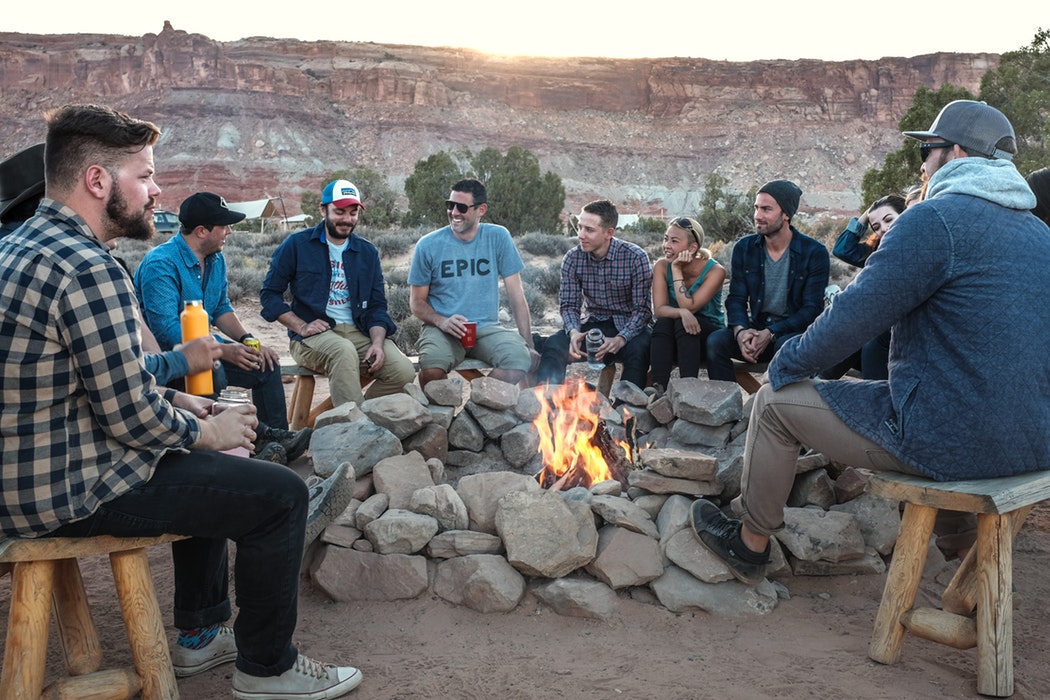Traditional advertising requires you to “push” your product(s) or service(s) onto potential or current customers. Maybe that’s working for your business and brand. The ads might be clever enough to draw attention. Yet, advertising, like expensive print collateral, can cost a premium, and many professionals and business owners just sort of hope somehow by virtue of advertising’s messenger pigeons that the right person will get the mail and show up at their door. In other words, the ROI in traditional advertising is difficult to calculate.
Free and even paid advertising on Facebook and Instagram will only take you so far. The email blasts will only work for so long.
So, what are you missing?
One key thing in today’s smart-minded marketplace and engagement economy: Personal engagement via a genuine community.
If you want to grow your business sustainably and for the long haul, consider the power of building genuine community.
We live in an engagement economy. We live in an experience economy. The research and case studies that I generate keep pointing to the fact that most people hunger for experiences that change the way they feel, live, relate. People – whether paying customers or not – want to be engaged with valuable ideas and information delivered by real human beings, not abstract companies.
The Power of a Genuine Engagement
It’s a challenge running a business and meeting your customer demands. To create a genuine community often requires you as the brand founder or even company CEO to “come forward” as the brand’s face and business’s voice. That’s not a comfortable move for some service-oriented professionals, business owners, creatives, executives, and entrepreneurs.
Maybe you have a website and a Yelp page and a presence on key social media channels like Facebook and Instagram, but that’s just the bare bones of being online. In order to engage with your customers, to generate new business, and to elevate your voice above your competition, create a brand-aligned online identity. This may seem like an overwhelming, even impossible, challenge, but it doesn’t have to be.
With online engagement, you get the opportunity to shape your brand’s story and drive the narrative of your business. Traditional advertising is missing one key ingredient: collaboration with your audience who could become your community.
You have the chance not only to market directly to your customer, but you also can now listen to and collaborate with your potential ideal customer. Through Facebook, you can create events, online groups, and shared experiences. Through Twitter, you can engage with the most recent industry news and connect with other experts in your field. But you also have the opportunity to raise questions to people following you on these channels, to observe what they’re sharing, and to notice what they’re frustrated with as well as what they’re wanting.
With our clients as well as with participants in our Brand Artistry Labs immersions, we often start building community by answering one key question: Why?
Emphasize Your Mission
Businesses of all sizes can be opportunistic. I don’t advise you to set out to build a brand community simply because you want to “build numbers” and make tons of passive revenue. The brand communities that survive and thrive operate by principle, ideal, and mission. Otherwise, your smart potential customers will smell your opportunistic ploys.
There’s a difference between building an audience and building a community, as I discussed with Dorie Clark, a marketing strategy consultant and professional speaker, and Jonathan Fields, a serial entrepreneur, growth strategist and award-winning author, in the Tracking Wonder podcast.
Before you set out to develop a genuine brand community, get clear on why your brand should even foster a genuine community – a group of people who share support and care for one another. To do so, start with mission.
Let’s say your mission as a yoga instructor is to promote healthy, mindful living. Maybe your mission, as a realtor, is to educate your customers on regional properties. Before you build your online platform, establish your mission. Your goal, of course, is to sell a product or service, but consider your purpose. Determine what you’re offering your customer; this could be parenting expertise, marketing services, or coffee beans.
If you’ve defined what business’s greater mission and your ideal customer, then it’s easier to articulate why your brand should have a genuine brand community in the first place. At Tracking Wonder, our mission is to help professionals, executives, founders, and entrepreneurs become more knowledgeable in their field and better grow their brand, which is why we focus on topics such as branding, content marketing, and innovation.
The mission of Graze, a subscription service, is to make snacking more wholesome and more accessible. At Ford, the mission is to “make people’s lives better through automotive and mobility leadership.” The mission of HuffPost is to make news “an essential and trusted part of any citizen’s life.”
Clearly define your mission. What meaning will you bring to your customer’s lives? Center your business’ message and story around this mission. And then clarify the mission behind your brand community. Why do people need to come together online or live in mutual support and care for one another?


